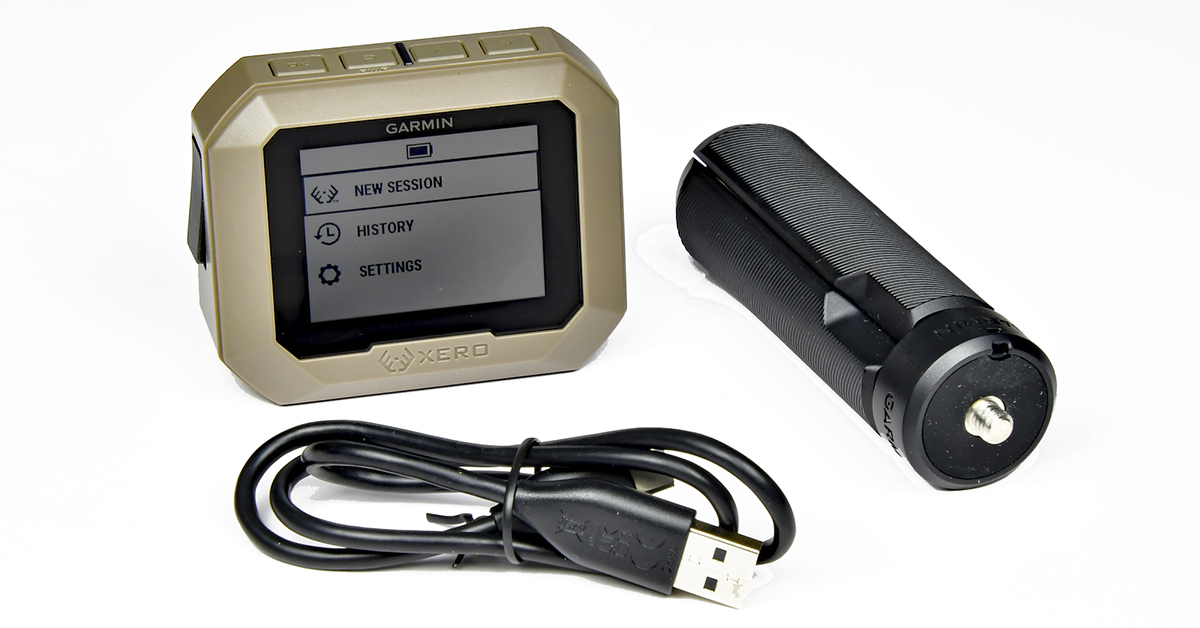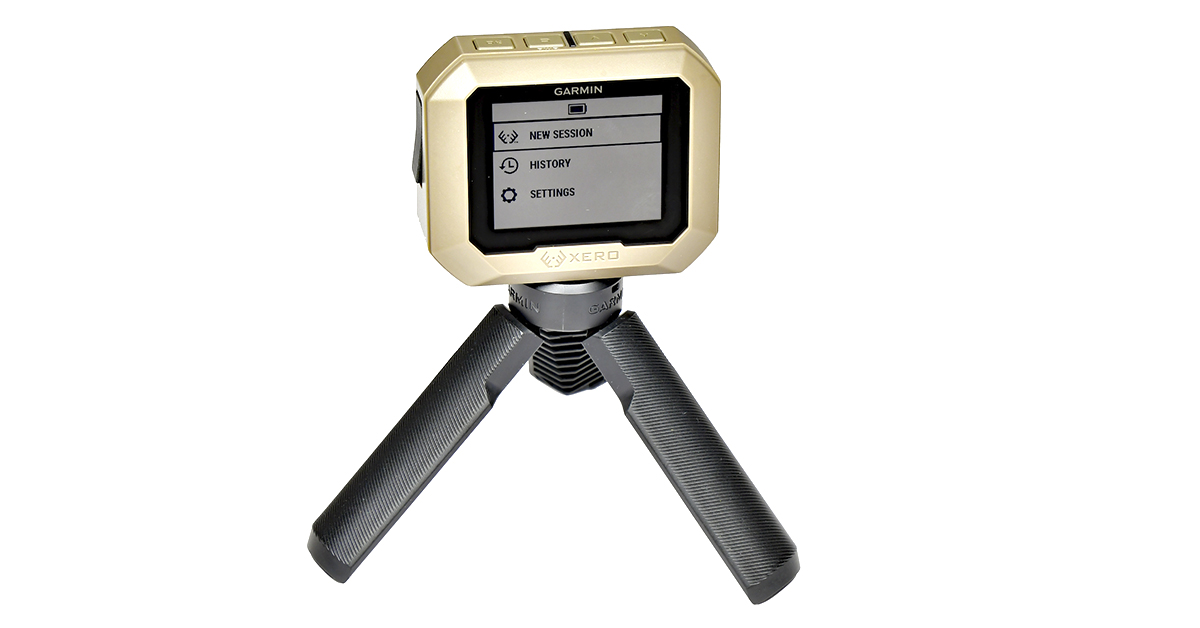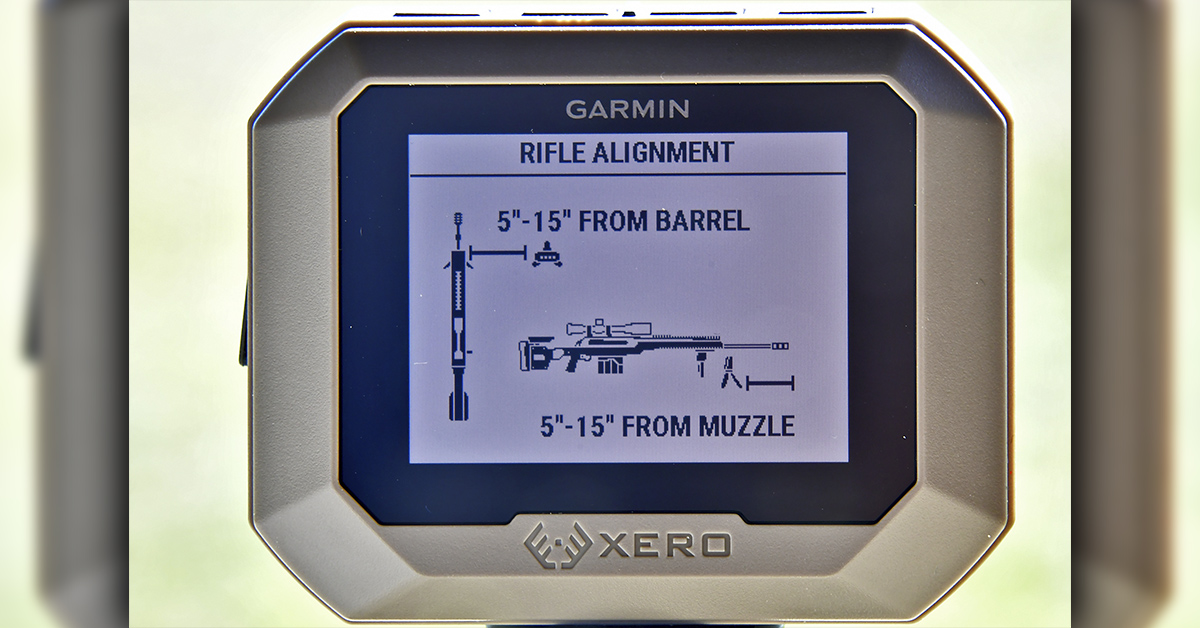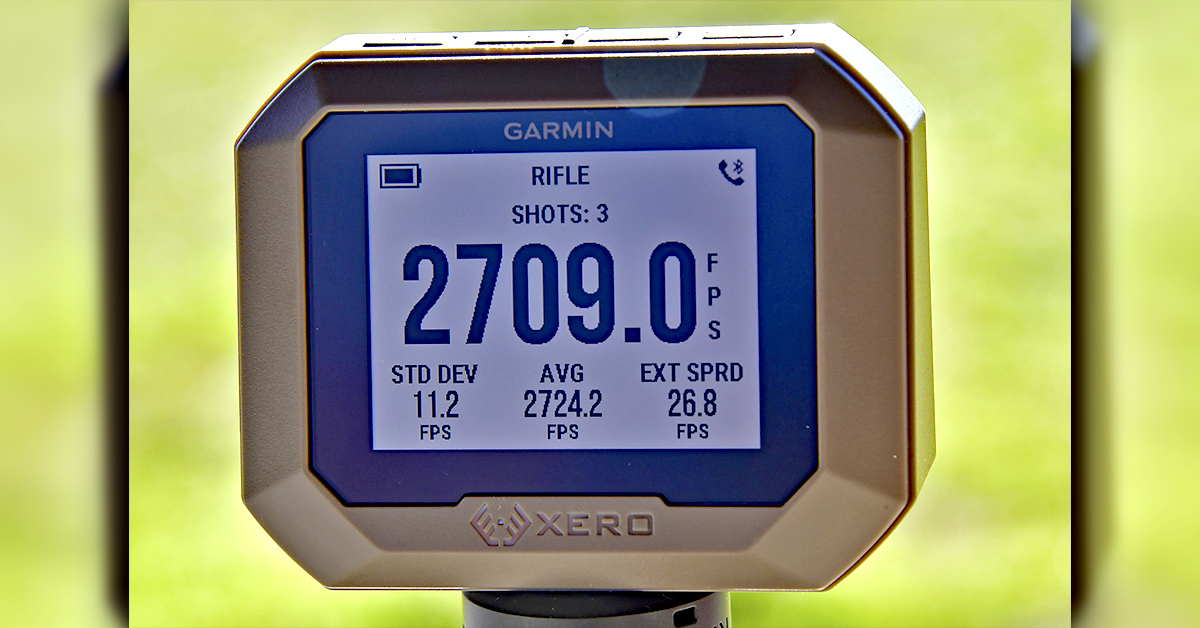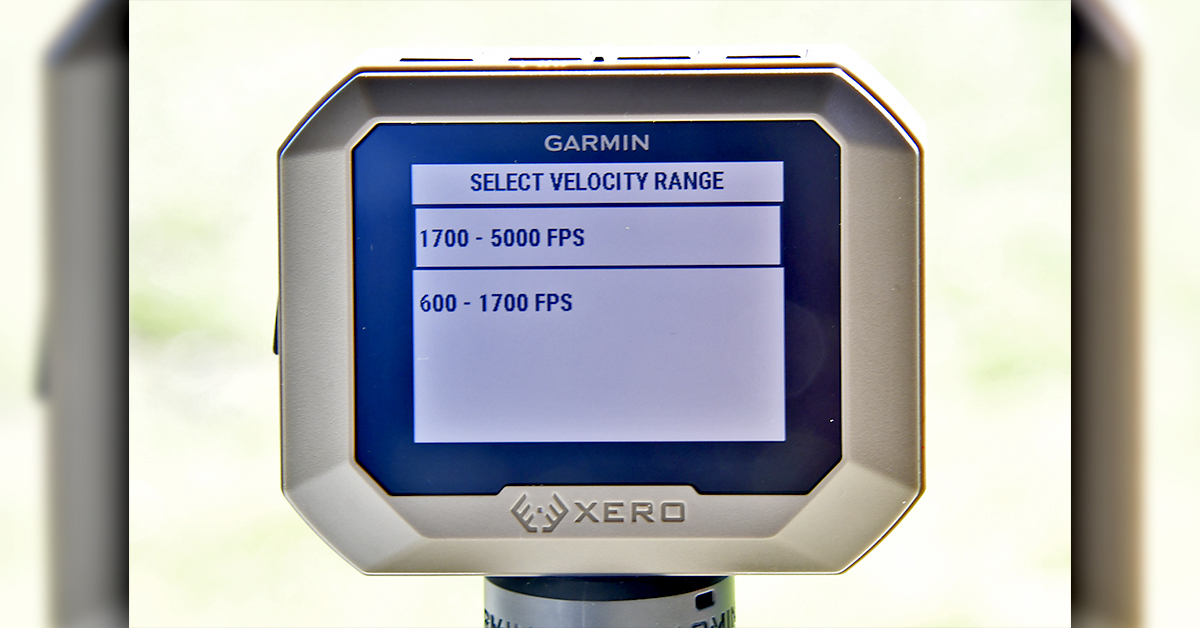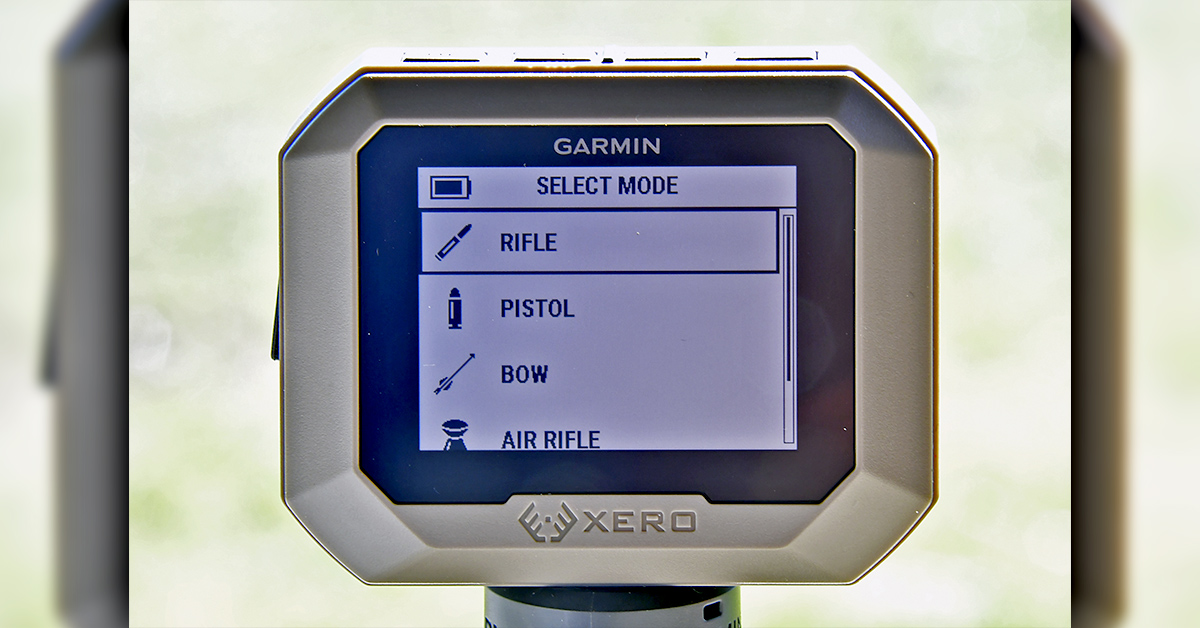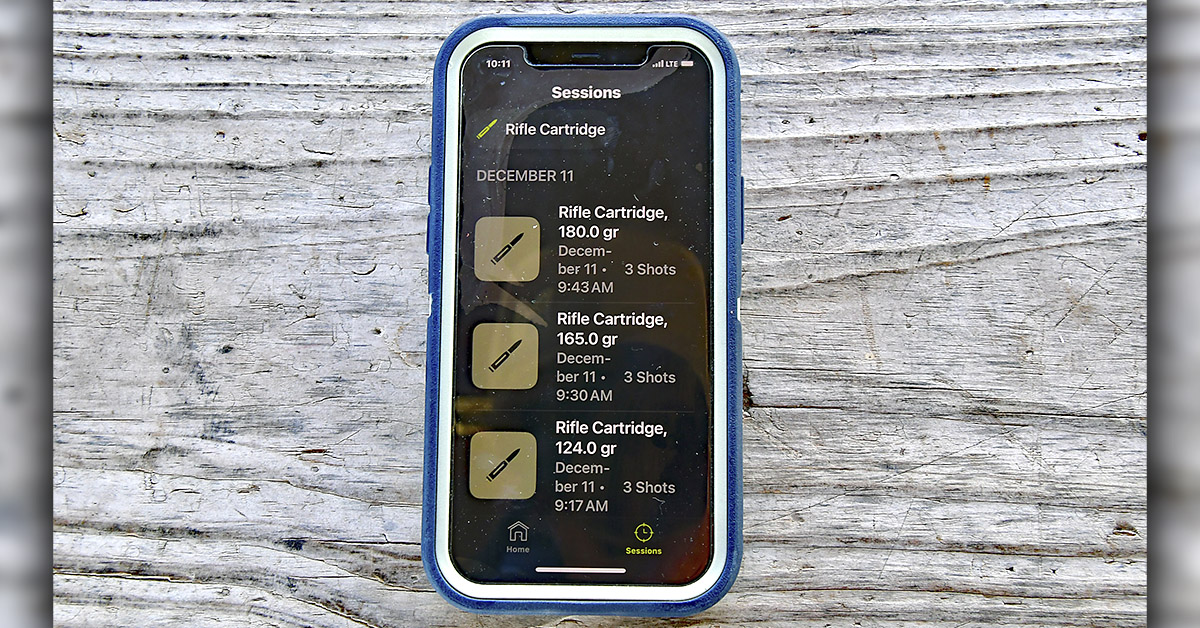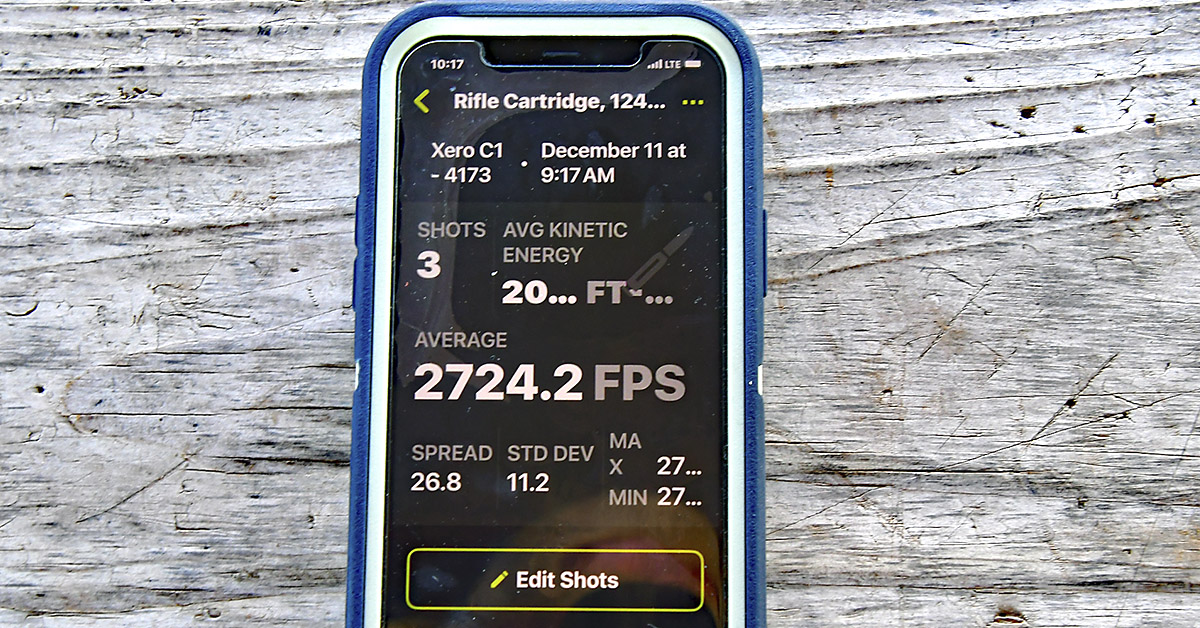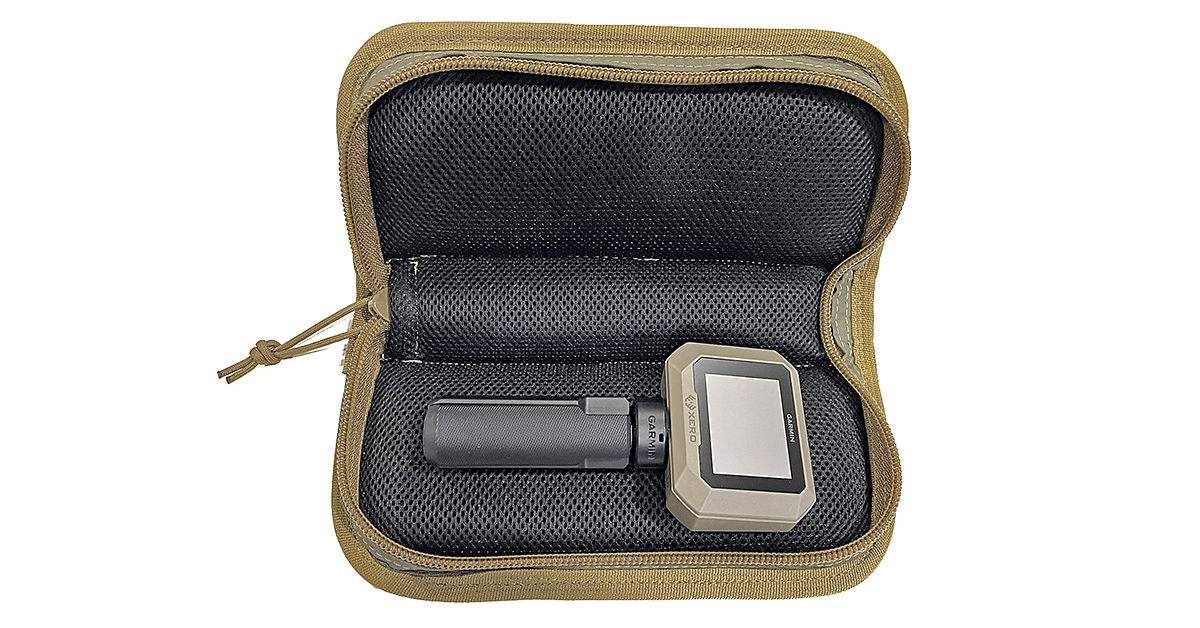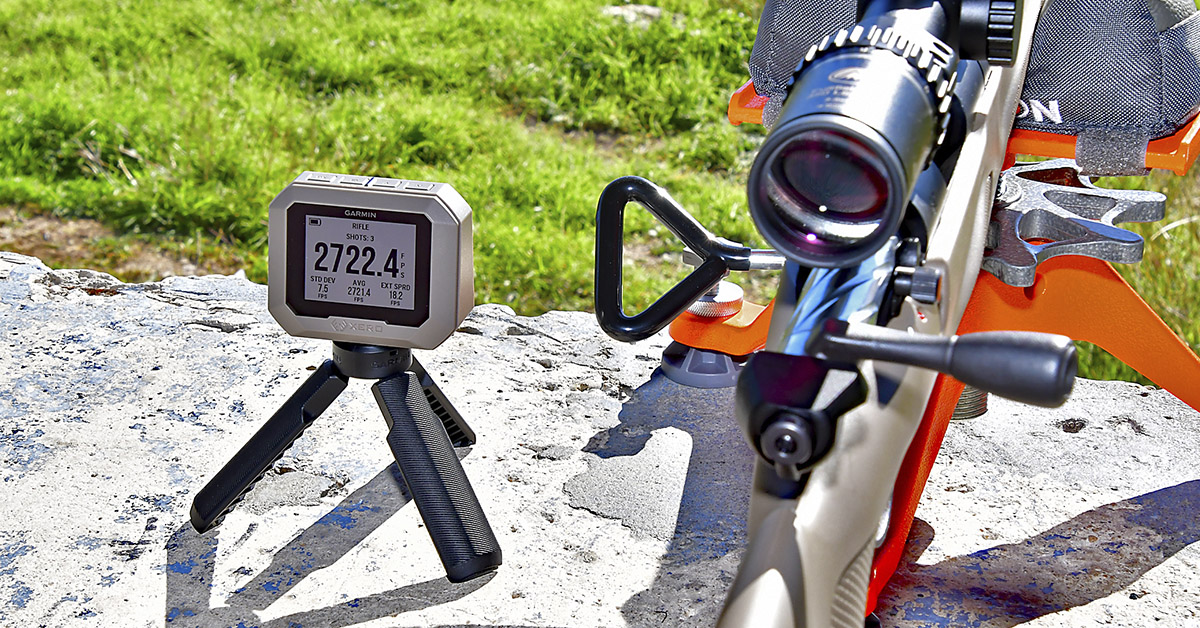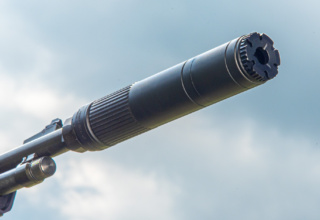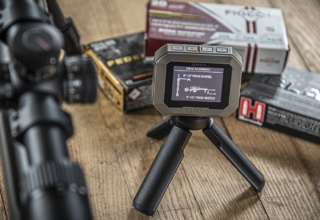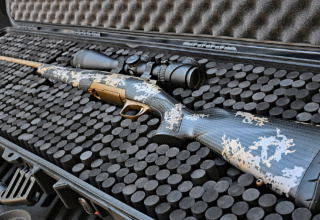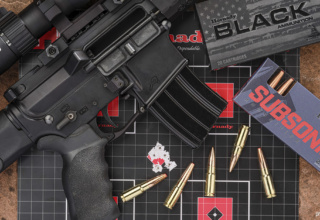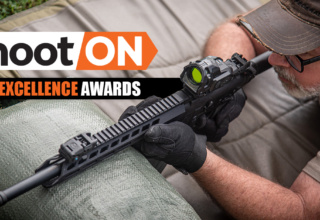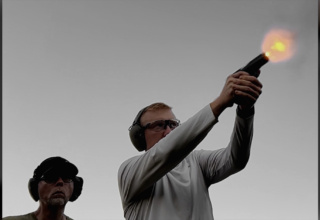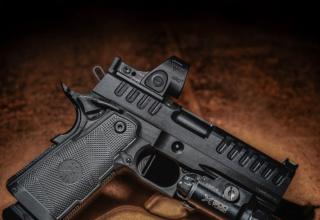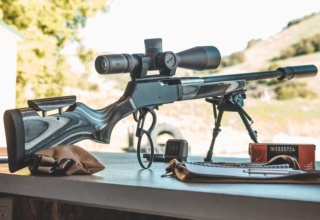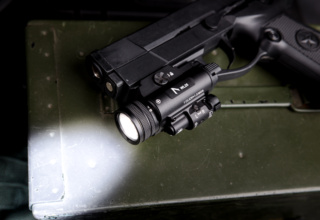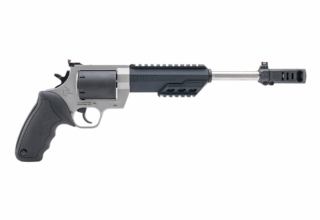Garmin’s ground-breaking Xero C1 Pro miniature chronograph won over the shooting world virtually overnight. How has it held up after a year of heavy use?
by Mike Dickerson
I have always had a love-hate relationship with chronographs. They have long been an indispensable tool for a gun writer — or any serious shooter — but they have also been a curse.
Many chronographs take a lot of time to set up and perfectly align sensors and shades on tripods at a specified distance in front of the muzzle. They can blow over in strong wind, require favorable lighting to work, and occasionally manage to get shot. Traditional bench-top radar units take up a lot of room, can be finicky in aligning to get readings, and can be prone to picking up phantom shots. Units that attach to barrels are cumbersome and can cause a shift in point of impact.
All of this changed dramatically for me about a year ago when I got my hands on a Garmin Xero C1 Pro chrono, which has proven to be nothing less than revolutionary in the chronograph market. The Xero C1 Pro is basically a miniature Doppler radar that can fit in a pocket. The main unit, minus its little supplied bench-top tripod, measures just 2.38x3x1.35 inches. It weighs just 5.6 ounces with the little tripod attached.
The unit is accurate, fast, and easy to set up and use. It is quite forgiving of positioning on the bench. It is, for people like me, a life-changing piece of gear. The only question in my mind when I first got the little Xero C1 Pro was how well it would stand up over time.
That question has, for me, been positively answered after subjecting the unit to heavy use over the last year. My chrono has seen extensive, near-weekly use in testing guns at the range, and I’ve taken the unit with me on numerous hunts. That’s one of the great advantages of the Xero C1 Pro: you can easily take it anywhere.
That is a blessing for traveling hunters who can use the unit to get accurate data in the field. Ballistic performance can change significantly if you travel to hunt at a substantially higher elevation, where thinner air reduces aerodynamic drag on bullets and can result in flatter trajectories. The opposite can happen when moving from high elevation to low elevation, and ballistic performance can also change with weather and barometric pressure fluctuations. With the Xero C1 Pro at hand, you simply use it to get average velocity in the area where you are hunting, punch the numbers into a ballistic app, and go hunting with the confidence of knowing what your bullet will do at distance.
In a full year of heavy use, the Garmin Xero C1 Pro has never let me down. It has never failed to pick up a shot. It has never picked up a phantom shot from someone shooting at a bench next to me. The unit somehow seems to know that it is only supposed to read shots from the rifle it is sitting next to. It has never been negatively affected by muzzle blast, and it has never shown any sort of software glitch. In fact, the unit notifies you when software updates are available and lets you choose if you wish to install them. The latest update took only about two minutes to download and install with the push of a button.
So long as I set the unit up within the recommended 5 to 15 inches from a gun and within 5 to 15 inches of the muzzle, it has never been finicky about getting readings. With a full charge, the rechargeable battery never ran out of juice, despite some long, grueling days at the range. The unit uses a rechargeable internal lithium-ion battery rated for 2,000 shots or six hours of continuous use at the range, charged via a supplied USB-C cord.
I extend battery life at the range even further by turning the unit off between shot strings while I let barrels cool. Thus far, I haven’t noticed any degradation of the battery’s ability to hold a charge. Should the need arise, some users have reported that they were able to order and replace batteries themselves.
In short, the Xero C1 Pro has done its job with virtuous reliability and predictability. Most every notable fellow gun writer I know has switched over to using the unit during the past year. When people who use such tools for a living cast their vote, that should tell you something.
In case you somehow missed the news of how successful the Xero C1 Pro has been, here’s a quick rundown of the unit’s features.
For starters, it’s easy to set up and to customize the display to show the data you’re most interested in. By default, mine showed velocity of the last shot, minimum velocity, average velocity, and maximum velocity. I went into settings and changed mine to display velocity of the last shot, average velocity, standard deviation, and extreme spread. I can now see that data, which is most useful to me, at a glance.
When you first use the unit, you need to go into its settings menu and select measurement unit (fps, mps or mph) as well as such things as display color, brightness, and language. You can also elect to have the unit prompt you to enter bullet weight at the start of a session, which is a good idea for later calculations.
If you’re using the unit with a rifle, the chrono will prompt you to select a projectile speed range of 600 to 1,700 fps or 1,700 fps to 5,000 fps.
It’s easy and intuitive to navigate menus using four buttons atop the unit. There’s a power/back button, up and down buttons for scrolling through options, and an OK button to make selections.
The unit has never given me any reason to question its accuracy, which Garmin claims to be within 0.1 percent. That translates into 2.8 fps for a bullet launching at 2,800 fps. I was told by a major ammunition manufacturer that they tested the Xero C1 Pro alongside their expensive Doppler unit used to build ballistic profiles, and readings were on the money.
Although I use the unit primarily with rifles, it’s capable of much more. At the beginning of a range session, you simply choose rifle, pistol, bow, air rifle, or other — although I’m not exactly sure of everything that could fall under “other.” If you want to use the chrono with a handgun or bow, you simply choose that mode and position the gun or bow 5 to 15 inches above the unit.
The chrono pleases app-happy folks because it pairs, via Bluetooth, with the Garmin ShotView app. This handy tool is easy to download and use, and it gives you more latitude to view, organize, and edit your ballistic data. You can designate clean/cold-bore shots, exclude shots from calculations, and enter notes about environmental conditions. Assuming you entered bullet weight at the start of a session, the app will calculate kinetic energy. It also gives you the option to save data to the Garmin cloud.
The app lets you export data as a CSV file and use it to populate an Excel spreadsheet. This can show you a shot-by-shot analysis, displaying velocity and variation from average along with such factors as kinetic energy in foot pounds and power factor. Data for shot strings includes average velocity, standard deviation, extreme spread, and any notes you entered for the session.
My only knock on the Xero C1 Pro was that it didn’t come with a protective case, which you’ll definitely want for a product in this price category. That’s not much of a problem, though, as quite a few aftermarket accessories have appeared over the last year, including cases, tripod ball heads, and Arca or Picatinny arms and mounts for attaching to firearms. The unit mounts onto any ¼-20 thread-compatible tripod.
I use a case from Armageddon Gear designed specifically for the Xero C1 Pro. It’s basically a hard case, measuring 10×5 inches, sewn into a 500-denier Cordura shell. It has ample open cell foam padding to protect the unit.
My chrono has taken a few bumps and knocks here and there during the past year, but it has shown no ill effects and it seems to be fairly rugged. Thus far, a little rain has not bothered the unit. It has an IPX7 water-resistance rating, which means it should be able to withstand being submerged in water up to three feet deep for up to 30 minutes with no damage. As with many things that are battery powered, the unit may not work optimally in extremely cold conditions. Garmin states that the chrono’s temperature operating range is from 14 degrees to 131 degrees Fahrenheit.
The Xero C1 Pro isn’t exactly inexpensive, with an MSRP of $599.99, but after one year of hard use, I’d say it’s worth every penny. I can’t imagine switching back to any other chronograph.
- Pelican Re-Set: One Rifle Case to Rule Them All? - October 8, 2025
- Hornady’s New .338 ARC: The .300 Blackout Killer? - June 2, 2025
- TESTED: Weatherby’s New Mark V Backcountry Guide Rifle - April 18, 2025

